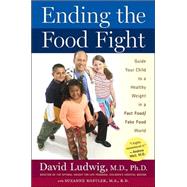
What is included with this book?
| Note to Reader | p. vi |
| Acknowledgments | p. vii |
| Introduction | p. 1 |
| A View from the Battlefront | |
| Overweight and Overpowered | p. 7 |
| Welcoming Children to Weight Loss: A Day at the OWL Clinic | p. 20 |
| Making Peace Within Us | |
| Eating to Feel Full | p. 43 |
| Getting Physical | p. 74 |
| It's the Thought That Counts | p. 99 |
| Making Peace in Our Families | |
| There's No Place Like Home | p. 123 |
| The 9-Week Program | p. 149 |
| Making Peace Around Us | |
| Changing the World | p. 185 |
| Increase the Peace | |
| Recipes | p. 205 |
| Reinforcements | |
| Diaries for the 9-Week Program | p. 299 |
| Shopping List | p. 307 |
| Recommended Reading | p. 317 |
| Notes | p. 319 |
| Index | p. 330 |
| Table of Contents provided by Ingram. All Rights Reserved. |
The New copy of this book will include any supplemental materials advertised. Please check the title of the book to determine if it should include any access cards, study guides, lab manuals, CDs, etc.
The Used, Rental and eBook copies of this book are not guaranteed to include any supplemental materials. Typically, only the book itself is included. This is true even if the title states it includes any access cards, study guides, lab manuals, CDs, etc.